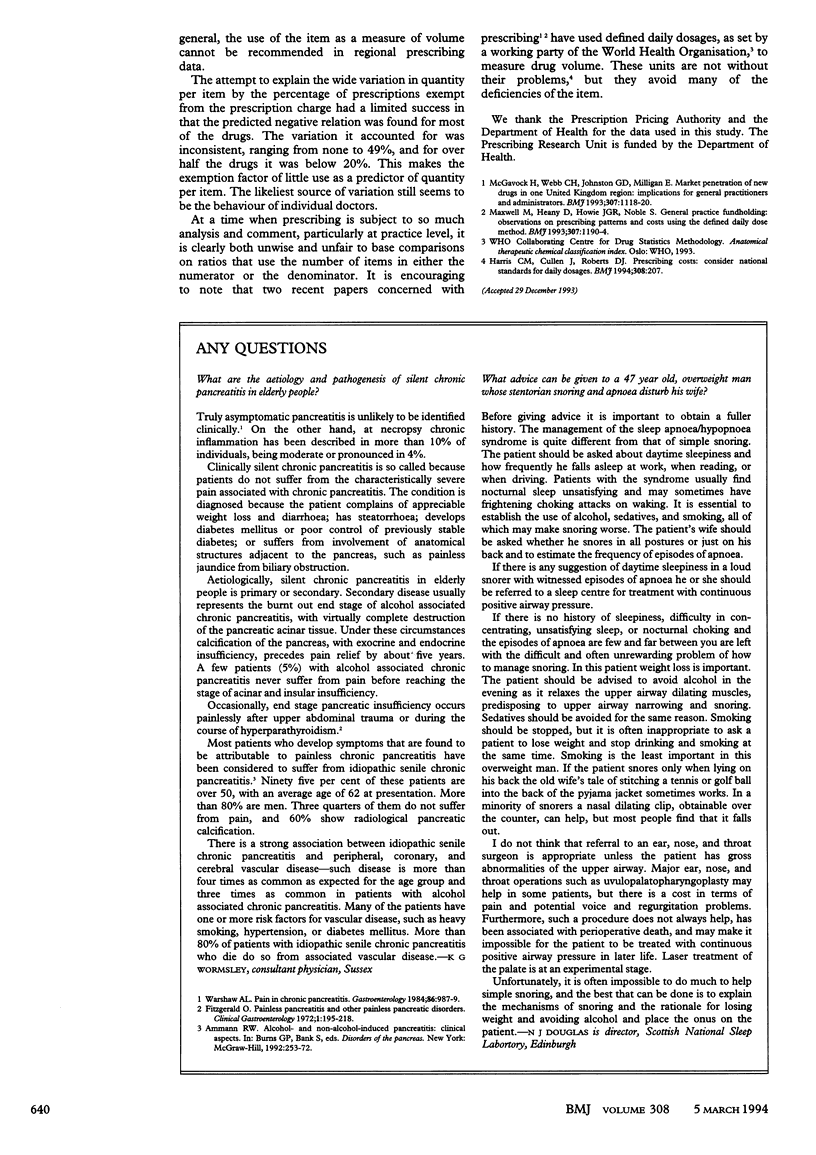Abstract
OBJECTIVES--To assess the validity of the item as a measure of the volume of a drug prescribed; and to investigate the possibility that higher quantities per item are prescribed for patients who are not exempt from the prescription charge. DESIGN--Five substudies. For the first, a frequency distribution was derived of the different quantities per item of 10 commonly used drugs prescribed by 20 randomly selected practices in each of five family health service authority areas. For the second, the variation in average quantity per item for the same drugs in the same practices was calculated. For the third and fourth, variation in average quantity per item for 90 commonly used drugs was calculated for all 90 family health service authorities and for all 14 regional health authorities in England. For the fifth, the average quantity per item for each of the 90 drugs was regressed on the percentage of items exempt from the prescription charge, at family health service authority level, and the percentage of variation explained by the regression found. MAIN OUTCOME MEASURE--Distribution of quantity per item; variation in average quantity per item between the practices, between family health service authorities, and between regions; and percentage of variation between family health service authorities accounted for by exemption from the prescription charge. RESULTS--Wide variation was found in the quantities per item prescribed by the practices, and in the average quantity per item between practices and between family health service authorities. No family health service authority was consistently high or low in quantity per item across the 90 drugs. Variation in average quantity per item was less at regional than at family health service authority level, though still high for many of the drugs. The proportion of variation accounted for by exemption from prescription charges ranged from 0% to 49% across the 90 drugs. CONCLUSIONS--The item is unsuitable as a measure of prescribing volume, even at regional level: a new measure, based on standard daily dosages, is needed. The percentage of the variation in quantity per item accounted for by exemption is inconsistent, and in over half the 90 drugs it was below 20%--therefore it is not a useful predictor.
Full text
PDF



Selected References
These references are in PubMed. This may not be the complete list of references from this article.
- Harris C. M., Cullen J. W., Roberts D. J. Prescribing costs. Consider national standards for daily dosage. BMJ. 1994 Jan 15;308(6922):207–207. doi: 10.1136/bmj.308.6922.207. [DOI] [PMC free article] [PubMed] [Google Scholar]
- McGavock H., Webb C. H., Johnston G. D., Milligan E. Market penetration of new drugs in one United Kingdom region: implications for general practitioners and administrators. BMJ. 1993 Oct 30;307(6912):1118–1120. doi: 10.1136/bmj.307.6912.1118. [DOI] [PMC free article] [PubMed] [Google Scholar]
- Warshaw A. L. Pain in chronic pancreatitis. Patients, patience, and the impatient surgeon. Gastroenterology. 1984 May;86(5 Pt 1):987–989. [PubMed] [Google Scholar]


